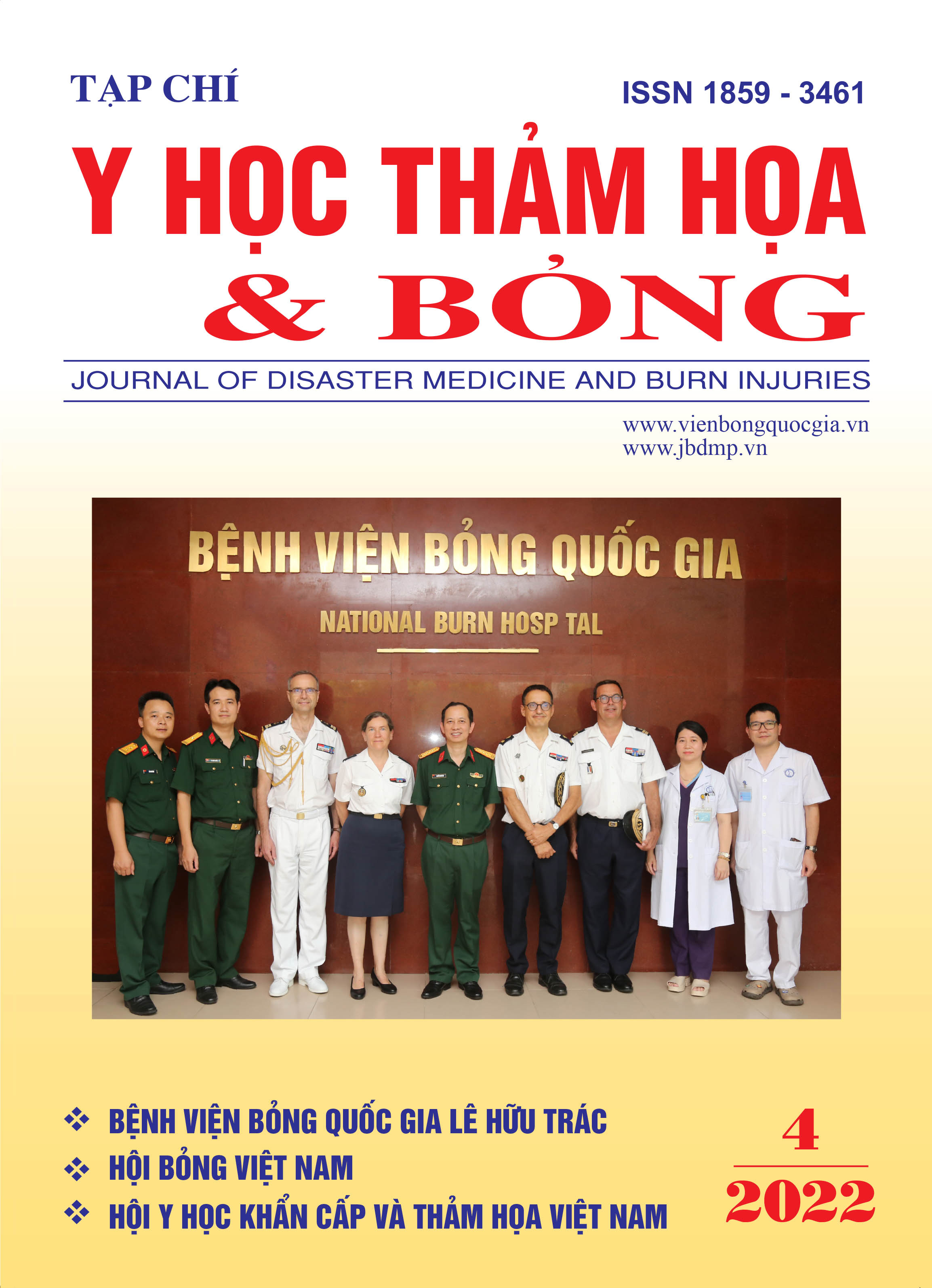Initial results of the application of latissimus dorsi muscle flap in plastic surgery to treat chronic wounds covering chest wall defects
Main Article Content
Abstract
Introduction: Chest wall defects are usually the result of tumor resection, infection, burn, or trauma, and the most common is radiation therapy for malignant pathologies, especially breast cancer in women. Many different methods have been studied in chest wall reconstruction, but for wide and complex defects on the chest wall, especially multiple necrotic, chronic lesions, the latissimus dorsi muscle flap can be taken widely suitable for breast wall reconstruction surgery.
Patients and methods: 87.5% (7/8) of patients had good results after surgery, the flap completely, and 12.5% (1/8) of patients had partial necrosis of the flap. The rate of skin graft healing completely was 100%, and the donor site was 100% epithelialized.
The results after 3 months were evaluated in 8 patients: No patients had recurrent ulcers, the flap area was good at 87.5%, and the average was 12.5%. For the donor site of skin graft and flap, 100% good results were recorded.
The results after three months were evaluated in 6 patients: no patients had recurrent ulcers; the flap, the donor site of skin graft, and the flap were good at 100%
Results after six months of evaluation on six patients: none of the patients had recurrent ulcers, and 100% of the patients recorded good results in both flap areas, for the donor site of skin graft and flap.
Conclusion: Latissimus dorsi muscle flap is always good at covering chest wall defects, and early recovery of anatomy and function.
Article Details
Keywords
Lager posterior chest wall defect, latissimus dorsi muscle flap
References
2. Phan Ngọc Khóa (2011). Bước đầu đánh giá kết quả điểu trị loét thành ngực do xạ trị bằng vạt da cơ lưng to cuống liền. Luận văn Thạc sỹ Y học, Đại học Y Hà Nội.
3. Hoàng Thanh Tuấn (2020). Nghiên cứu đặc điểm lâm sàng, giải phẫu bệnh và phẫu thuật điều trị tổn thương da do xạ trị, Luận án Tiến sỹ Y học, Học Viện Quân Y.
4. Wei K.-C., Yang K.-C., Chen L.-W.. et al (2016). Management of fluoroscopy-induced radiation ulcer: One-stage radical excision and immediate reconstruction. Scientific reports.6 (1): 1-6.
5. Học Viện Quân Y (2018) Giáo trình Bỏng. Nhà xuất bản Quân đội nhân dân.
6. Đoàn L. V. (2002). Nghiên cứu giải phẫu và ứng dụng lâm sàng vạt cơ, da - cơ lưng to trong điều trị khuyết hổng lớn ở chi dưới, Học Viện Quân Y.
7. Nguyễn Roãn Tuất. (2011). Nghiên cứu giải phẫu cuống mạch ngực lưng và ứng dụng vạt da cơ lưng to cuống liền trong tạo hình khuyết phần mềm thành ngực.
8. Nguyễn Huy Phan (1999). Kỹ thuật vi phẫu mạch máu - thần kinh, thực nghiệm và ứng dụng lâm sàng. Nhà xuất bản Khoa học và Kỹ thuật, Hà Nội.
9. Brumback R. J., McBride M. and Ortolani N. (1992). Functional evaluation of the shoulder after transfer of the vascularized latissimus dorsi muscle. JBJS.74 (3): 377-382.


